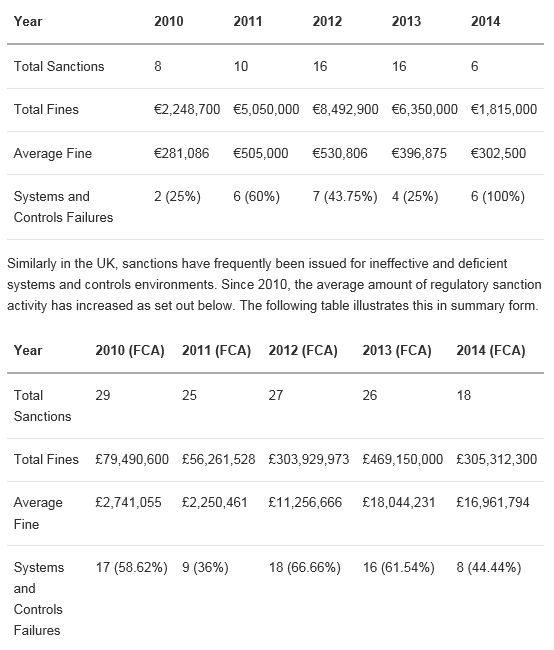Introduction
The Commercial Court delivered judgment in the case of Quinn v Irish Bank Resolution Corporation Limited and Kieran Wallace[1] on 19 May 2015, confirming that the scope of litigation privilege extends not only to documents created for the dominant purpose of anticipated litigation, but also to documents created in contemplation of a criminal or regulatory investigation.
The judgment has significant implications for businesses engaged in a regulatory process, as it provides them with an opportunity to immediately engage with their lawyers on a privileged and confidential basis. It also highlights that the assistance of lawyers at an early stage of an investigation can have substantial benefits for an organisation, both in the regulatory process itself and in any future civil action.
The rationale for privilege
In general, a witness will be bound to answer all relevant questions put to him, and will be held to be in contempt of court if he refuses to do so; however, the law recognises that there are a number of instances in which a person enjoys a privilege from being compelled to answer a question or produce a document.
The law of privilege seeks to balance, on the one hand, the administration of justice and the interest in ensuring that all relevant evidence is before the courts, and on the other, the protection of the relationship between lawyer and client which relies to a degree on confidentiality. The reasoning behind the existence of legal professional privilege is that of encouraging a client to make full and frank disclosure of all relevant facts in relation to his case to his lawyer, in confidence that such disclosures will not be revealed without the client’s consent.
Legal professional privilege can be divided into two basic categories: “legal advice privilege” and “litigation privilege”. Broadly speaking, legal advice privilege protects a person from producing confidential communications made between him and his lawyer for the purpose of giving or receiving legal advice. In order to establish legal advice privilege, it must be shown that the document or information sought to be disclosed consists of a confidential communication made in the course of a professional legal relationship, for the purpose of giving or receiving legal advice. It should be noted that not all communications between a solicitor and client are privileged, only those made for the purpose of giving or receiving legal advice, and those made in confidence. This privilege will apply regardless of whether litigation is contemplated or not.
Litigation privilege, on the other hand, applies to confidential communications between a client and his lawyer or a third party such as a witness or expert, the dominant purpose of which is to prepare for anticipated litigation. A document will be privileged if the dominant purpose for its creation is contemplated or reasonably apprehended litigation. The test as to the dominant purpose of the creation of the document is an objective one, and it will not be sufficient that the document was created for more than one equal purposes, one of which is contemplated litigation.
It should be noted that no privilege is absolute; as the doctrine has its roots in public policy, exceptions may be made in circumstances where the balance of the public interest in disclosing the document or communication outweighs the maintenance of the privilege. In particular, privilege will not apply to communications made in furtherance of crime or fraud. The courts have held that the purpose of legal professional privilege is “to aid the administration of justice, not to impede it”[2].
Expansion of the doctrine of privilege
The Quinn v Irish Bank Resolution Corporation Limited and Kieran Wallace case concerned an application for further and better discovery; the defendants asserted privilege over a number of disputed documents and sought to establish that the dominant purpose for the creation of the documents was the contemplation of further litigation, or for the purpose of two investigations, one by the Financial Regulator, and one by the Director of Corporate Enforcement.
Previous caselaw has confirmed that privilege can be claimed by a person whose conduct is under examination by a tribunal of inquiry, on the basis that although such a tribunal may not be involved in the administration of justice, it does have an adjudicatory function, and any report it may produce has the potential to have serious and damaging effects for the persons called before it. In the case of Ahern v Mahon[3], the plaintiff was held to be entitled to claim litigation privilege in respect of communications between him and his legal advisors and experts retained by him for the purposes of the inquiry proceedings. As a person whose conduct was under examination by the tribunal of inquiry, the plaintiff was held to be entitled to certain fundamental constitutional rights, including the right to one’s good name, the right to fair procedures, and the right to natural and constitutional justice. Judge Kelly held that a person appearing before a tribunal of inquiry and to whom such fundamental constitutional rights apply to is to be regarded as being in the same position as a party to High Court litigation, and not a mere witness, from the point of view of legal professional privilege.
Judge McGovern in the Quinn judgment accepted the first defendant’s submission that it was entitled to assert investigatory privilege or regulatory privilege in respect of any documents created for the dominant purpose of engaging with the regulatory and investigative processes in question. Judge McGovern cautioned that the privilege did not extend to all documents created after the date on which the defendant became aware of the investigations, but only those documents created for the dominant purpose of engaging with those investigation processes.
The logic behind the application of privilege is the principle that a person must be able to consult his lawyer in confidence, and be sure that what he tells his lawyer in confidence will never be revealed without his consent. It has been described as “much more than an ordinary rule of evidence, limited in its application to the facts of a particular case. It is a fundamental condition on which the administration of justice as a whole rests”[4]. The labelling of a tribunal of inquiry as inquisitorial rather than adversarial will not be determinative, and the central issue will be one of fairness.
The Quinn judgment provides further clarity on the scope of documents that will attract privilege in the context of inquiries and investigations, and clearly establishes the principle of investigatory/regulatory privilege.
This briefing is correct as at 13 July 2015.
Disclaimer
This information is for guidance purposes only. It does not constitute legal or professional advice. Professional or legal advice should be obtained before taking or refraining from any action as a result of the contents of this publication. No liability is accepted by Eversheds for any action taken in reliance on the information contained herein. Any and all information is subject to change. Eversheds is not responsible for the contents of any other website or third party material which can be accessed through this website.
Eversheds is an Irish partnership and a member firm of the Eversheds International network of firms affiliated with Eversheds International Limited, an English company limited by guarantee. Member firms of Eversheds International are independent firms and members of Eversheds International Limited, but have no authority to obligate or bind Eversheds International Limited or one another vis-à-vis third parties. Neither Eversheds International Limited nor any of its member firms have any liability for each other’s acts or omissions.
[1] [2015] IEHC 315
[2] Gallagher v Stanley [1998] 2IR 267, 271.
[3] [2008] IEHC 119
[4] Lord Taylor in R. v. Derby Magistrates Court Ex parte B [1996] 1 A.C. 487, cited with approval in Duncan v. Governor of Mountjoy Prison [1997] 1 I.R. 558




